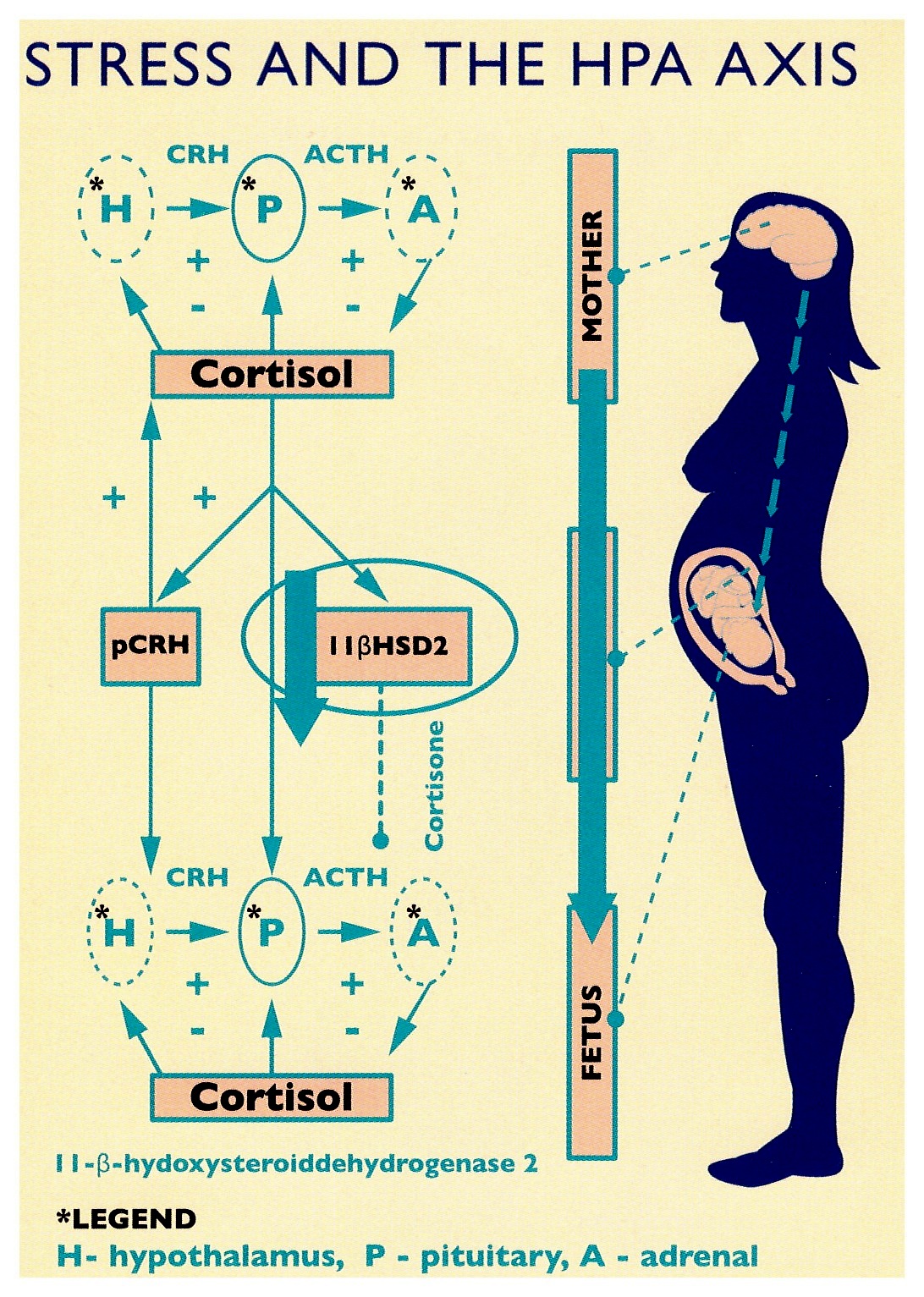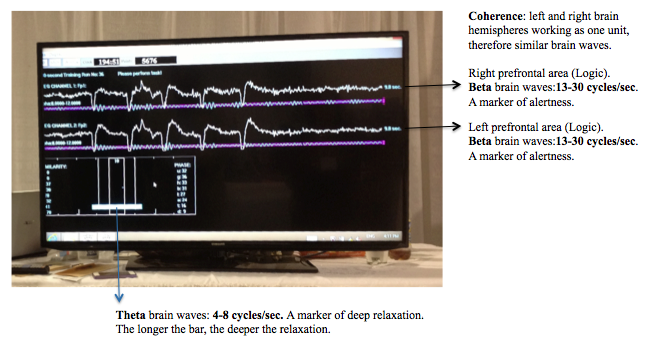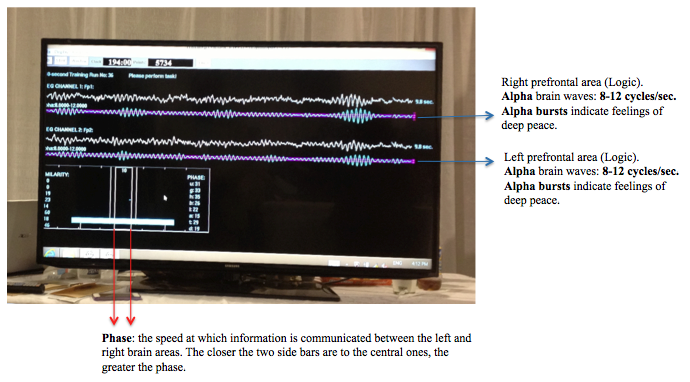Let’s Talk!
“During pregnancy, the mother and the fetus are really only one entity, and birth is the process of one becoming many. In this role, every woman is a creator of life and she should be referred to and worshiped as such.” Dr. Guy-Paul Gagné MD, FRCS, FSOGC
I recently attended a seminar titled “Pregnancy, Hormonal Balance & the Transcendental Meditation (TM) Advantage” by Dr. Guy-Paul Gagné. Dr. Gagné, a professor and researcher at McGill University, has a current practice in obstetrics and gynecology. Dr. Gagné has delivered over 10,000 babies during the past 30 years.
The seminar aimed at increasing our awareness of the effects of stress on the delicate hormonal balances of an expectant mother. Furthermore, it highlighted the responsibility of everyone in the support, protection, and nurture of pregnant women and their deliveries. I will discuss the major points presented by Dr. Gagné.
 Dr. Guy-Paul Gagné MD, FRCS, FSOGC
Dr. Guy-Paul Gagné MD, FRCS, FSOGC
For centuries, women have been able to have normal deliveries. In this modern era, childbirth can be assisted and eased through various interventions. While lives have been saved, there is a downside to this medicalization of pregnancy. Indeed, various studies over the past 50 years have shown that now women’s labor is longer, induced labor is more frequent, and doctors are performing more caesarian sections and epidural injections. The challenge in our modern world is to know when, and to what extent should we intervene in order to not disturb this natural process.
First, let’s review some of the hormones involved during pregnancy.
The autonomous nervous system contr ols the hypothalamus-pituitary-adrenal (HPA) axis that produces most of the body’s hormones. Therefore we usually have no conscious control over this mechanism.
ols the hypothalamus-pituitary-adrenal (HPA) axis that produces most of the body’s hormones. Therefore we usually have no conscious control over this mechanism.
The hypothalamus is at the base of the brain and constantly receives information from the environment to monitor any signs of danger. The pituitary gland is a small gland at the basis of the brain that makes most of the hormones in the body and is also a reservoir of hormones when quickly needed. The adrenal glands sit on top of the kidneys and produce cortisol (a stress hormone).
During pregnancy and childbirth:
– Oxytocin, the bonding hormone, is produced by the pituitary gland during childbirth. It also produces iiiiuterine contractions.
– Prolactin, the milk hormone, triggers the surrender of the mother to the baby and triggers feelings of iiiitranquility. It partially shuts down the HPA axis.
– Uterine contractions increase the production of endorphins, the painkiller hormone. The mother’s iiiimilk is subsequently awash with endorphins, which has a calming effect on the breastfed baby.
– Cortisol, the stress hormone, is transformed into cortisone, which is an anti-inflammatory.
– Adrenaline, the “fight or flight” hormone, is moderately produced. If too high, the uterine iiiicontractions will stop, slow down, or become erratic. Then pain becomes suffering.
Studies have shown a relationship between prenatal stress and the cognitive, behavioural, and emotional development of the child. For example, prenatal stress can delay fetal nervous system maturation; alter the stress response in newborns; and result in gray matter (brain) volume decrease in children.
The experience of stress is subjective. Some mothers go through a very stressful event, yet the baby is not affected while other mothers experience low stress, but are very emotionally affected.
At 32 weeks, the natural placenta barrier opens up, and cortisol passes freely from the mother to the baby. The baby is, therefore, communicating directly with the mother to find out about the safety level of her surroundings.
If the mother feels chronically stressed or threatened, the musculoskeletal development of the baby will be emphasized. If the mother is mostly calm and peaceful, the cerebral development of the baby will be emphasized.
Research has shown that TM significantly decreases the level of cortisol after only 4 months of regular practice. The average person is chronically stressed and has a higher stress baseline. Over time, most people have less ability to respond to an actual threat.
TM is an effortless meditation method popularized in North America by Maharishi Mahesh Yogi. This type of meditation is a process that involves a very specific way of using a mantra which takes advantage of the natural tendency of the mind to settle. It is therefore in the rare category of “auto transcending” meditation practices.
TM may be one of the most researched and practiced meditation methods in the world. It is practiced twice a day for twenty minutes in a seated position and leads to the experience of restful alertness, which activates and strengthens the nervous system.
With regard to pain, practitioners of TM feel the same amount of pain as the general population, but they report less suffering. Therefore TM helps with the emotional aspect of pain. Also, the brains of meditators are more integrated and work as a coherent unit.
The pictures below are my Electroencephalogram (EEG) readings before and during TM. It takes only about 1 second for the brain waves to change when one starts to meditate. The first picture was taken when my eyes were open and I was not meditating. The second picture is after 50 seconds of meditation.
Dr. Gagné recommends the following for expectant mothers:
– Restorative sleep, both in terms of duration and quality.
– Work cessation outside the home after 32 weeks of pregnancy.
–iThe partner, friends, and family members should create a “bubble of happiness” around the pregnant iiiiwoman.
– Adequate support and a relaxed environment during labour.
–iSkin-to-skin contact between the mother and the newborn for 2 hours after delivery. The iiirelationship between the mother and the baby will be closer up to 3 months after the birth.
– During the first day of the life of the newborn, the mother and the baby should not be apart for more iiithan an hour, as the baby may become disoriented/distressed.
– Breastfeeding. Prolactin produced during this activity has a positive effect on the quality of sleep of iiithe mother.
– Regular TM practice.
Pregnancy is a magical and delicate period. Our modern lifestyle has created new challenges for expectant mothers. Dr. Jean-Guy Gagné explored how the intricate interaction of hormones, the environment, and Transcendental Meditation can affect the wellbeing of mothers and the newborns. With this information, we have an opportunity to increase the likelihood that future generations of infants may be happier and healthier.
Do you want to learn more about Transcendental Meditation? Click here.
Do you want to explore other types of meditation for pregnant women? Click here to learn about Expectful, which offers various meditations for mothers. This organization also provides support for couples and information on topics such as breastfeeding.
Literary Truths
Here are the questions asked during the lecture:
Q: Why is labor duration longer now than before if there are more resources to prepare women for childbirth? 50 years ago, women did not receive better education about delivery.
A: We are unsure of the reason, but it could be due to chronic stress experienced by modern women. Most women take on a lot more responsibilities outside the house, and it may create tension in the body that results in longer and more difficult labor. Also, many women are unsure of their ability to have natural deliveries.
Q: Is it safe to give birth at home versus in the hospital?
A: Based on sound research, home delivery is as safe as a hospital one. Since childbirth is facilitated by a relaxed/familiar environment, one’s home is a good setting. Therefore, if there are no foreseen complications and the mother is well prepared, home birth is preferable to a hospital one.
Q: Are there any studies about the effect of combining TM with hypnosis to facilitate labor?
A: I have not come across such studies. However, hypnosis falls into the category of central nervous system control, similar to TM. We could hypothesize that the combination of these two techniques may help reduce stress and suffering during childbirth.
Q: How often do pregnant women should meditate?
A: The standard practice of TM is 20 minutes twice a day. Pregnancy, sickness, and when one is traveling, are the rare cases when people can meditate as often as they want.
References
Picture 1: http://mieuxnaitre.org/nid/panel
Picture 2
Blissful Mothering , The TM Avantage Pamphlet
Picture 3
Courtesy of David Shaw, Certified TM Teacher
Picture 4
Courtesy of David Shaw, Certified TM Teacher


Last Monday, the American Heart Association released a statement concerning hypertension and alternate therapies. TM was the only meditation/relaxation technique to make the grade as recommended for clinical treatment of hypertension.
Very good blog post. I absolutely love this site.
Continue the good work!
Hi my friend! I wish to say that this article is amazing,
nicely written and come with all vital info.
I would like to see more posts like this.